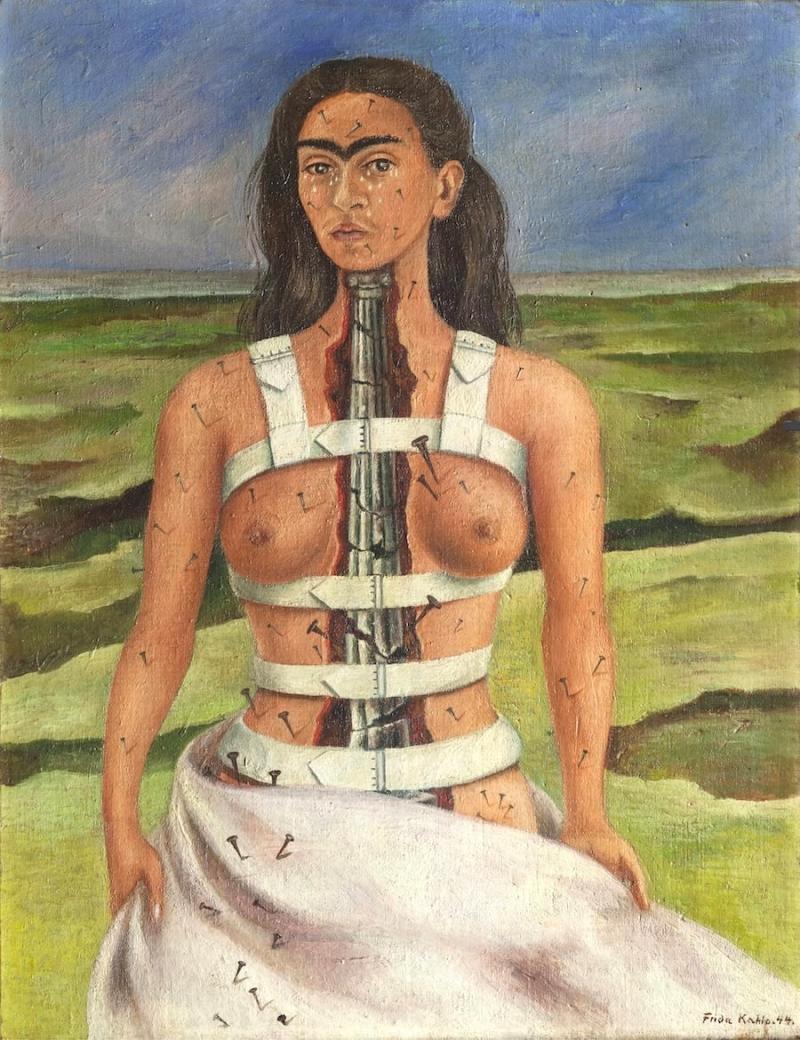Frida Kahlo: diagnosis 70 years after her death
Frida Kahlo: diagnosis 70 years after her death

Frida Kahlo (1907-1954) is one of the most celebrated artists of the 20th century, mainly known for her self-portraits, in which she combined fantasy and realism. Although she was often categorized within the surrealist movement, she claimed that her works were not the product of dreams, but of life. A life that was marked by a traffic accident as a result of which she suffered intense pain and had to remain immobile for long periods of time. But what exactly was the origin of his pain? The medical documents of the time suggest the sum of multiple causes: fractures, immobilization, post-polio, spina bifida... Now, experts from the Institut Guttmann have published in the Journal of Neurology that part of his symptoms could be caused by a cauda equina syndrome -a lesion in the lower part of the spinal cord- of traumatic origin. This diagnosis provides a more complete explanation of the symptoms that affected the artist's life and work.
At the age of 6, Kahlo contracted polio, which caused permanent sequelae: her right leg was shorter and weaker than her left. But the event that most marked her life was a bus accident at the age of 18. Kahlo, who was one of the passengers on the bus, dislocated her left elbow, ankles and shoulders; she broke multiple ribs and suffered 3 fractures in her pelvis and 11 in her right foot, which was crushed. Two of her lumbar vertebrae, L3 and L4, were fractured and dislocated, and an iron rail caused an abdominal perforation with entry through the left hip and exit through the vagina. Following the accident, the artist spent a month in the hospital and two months recovering at home, but after this period she continued to experience fatigue and pain in her back, legs and genitals.
Chronic pain and fatigue
Kahlo's condition worsened over time. Between 1946 and 1950, she underwent eight operations, yet continued to experience chronic pain and fatigue. Documents from her physician, Dr. Leo Eloesser, further indicate “decreased sensation in her lower body and worsening of her right foot and leg.”
The authors of the article have concluded that the reduced sensitivity in the legs, added to the neuropathic pain (pain caused by injury or abnormal functioning of the nervous system) in the legs and genitals, are consistent with a diagnosis of cauda equina syndrome (CES), caused by damage to the nerve roots in the lower part of the spinal cord - the so-called cauda equina. This syndrome, the authors state, would be a consequence of the accident and would explain part of Kahlo's symptomatology: intense back pain, leg pain and loss or alteration of sensitivity in the lower part of the body, including the genital areas.
Access the access the media repercussions:
- Diari ARA: L'Institut Guttmann considera que Frida Kahlo patia la síndrome de la cua de cavall
- El Punt Avui: L’últim diagnòstic de Frida Kahlo
- Publico: Frida Kahlo murió "tras siglos de tortura" sin conocer el diagnóstico de su enfermedad
- ElDiario.es: Diagnostican la afectación de Frida Kahlo 70 años después: síndrome de cola de caballo
- ABC: Investigadores españoles identifican la causa del dolor crónico de Frida Kahlo 70 años después de su muerte
- 20 minutos: Investigadores españoles diagnostican el síndrome que sufría Frida Kahlo
- El Periódico: El Institut Guttmann de Badalona diagnostica el síndrome que sufría Frida Kahlo, 70 años después de su muerte
- El Diario de México: Diagnostican la afectación de Frida Kahlo 70 años después: síndrome de cola de caballo
- Montevideo: 70 años después de su muerte, diagnostican la dolencia que atormentaba a Frida Kahlo
- El Matí de Catalunya Ràdio: a partir de 25'50”. Declaracions de Dra. Hatice Kumru




